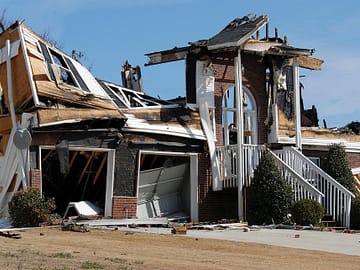Selling a fire-damaged property can be a challenging endeavor, but there’s a niche market of investors who see potential in these distressed homes. To successfully attract investors and find buyers for fire-damaged properties, you need a strategic approach. Also, you can still sell your house after fire burns through it and get the best deal possible. In this article, we’ll explore effective methods to draw the attention of investors and sell your fire-damaged property.
Prepare the Property
Before marketing your fire-damaged property to investors, ensure that you’ve completed necessary repairs, cleaning, and deodorizing to make it as presentable as possible. Address structural issues and safety concerns first to make the property safe and habitable. A well-prepared property is more likely to attract investors.
 Professional Staging
Professional Staging
Staging a fire-damaged property can help potential investors envision its potential. Hire professional stagers to arrange furniture and decor in a way that highlights the property’s best features and minimizes the impact of any remaining damage. Photos and videos of a well-staged property can be powerful marketing tools to attract investors.
Price It Right
Pricing a fire-damaged property can be tricky, as its value may have decreased due to the damage. However, pricing it too low may also deter serious investors who see it as a red flag. Consult with a real estate agent or appraiser to determine an appropriate price that considers the cost of repairs and the property’s potential value after renovations.
High-Quality Photography
Invest in professional photography to showcase the property in the best possible light. High-quality images can make a significant difference in attracting investors and creating a positive first impression. Be sure to include before and after photos to demonstrate the potential of the property.
 Online Listings
Online Listings
Utilize online platforms to list your fire-damaged property. Real estate websites, social media, and online classifieds are excellent places to reach potential investors. Include detailed information about the property’s condition, repairs made, and the potential for return on investment.
Investor Groups
Many areas have local real estate investment groups or associations. These groups are a goldmine for connecting with investors interested in fire-damaged properties. Attend meetings, participate in discussions, and showcase your property to a network of potential buyers.
Direct Mail Marketing
Consider targeted direct mail marketing to investors. Send out postcards or letters showcasing your fire-damaged property and its investment potential. Highlight the expected return on investment (ROI) and the unique opportunity your property offers.
 Auctions
Auctions
Auctions can be an effective way to attract investors looking for fire-damaged properties. Auction events generate a sense of urgency and competition among buyers, potentially driving up the selling price. Work with auction companies experienced in selling distressed properties.
Highlight the Potential
When marketing your fire-damaged property, emphasize its potential. Investors are often looking for opportunities to add value to a property. Highlight any renovations or improvements that have already been made and suggest ideas for further enhancements to increase the property’s value. Honesty and transparency are key when dealing with investors. Clearly communicate the property’s history, repairs made, and any ongoing work. Providing all relevant information builds trust and encourages investors to consider your property.
In Conclusion
Attracting investors to buy a fire-damaged property is entirely possible with the right approach. By preparing the property, utilizing professional services, and marketing through various channels, you can create a compelling case for investors to consider your distressed property. Remember, investors are often looking for unique opportunities, and a well-presented fire-damaged property can be a valuable addition to their portfolio.


 Professional Staging
Professional Staging Online Listings
Online Listings Auctions
Auctions